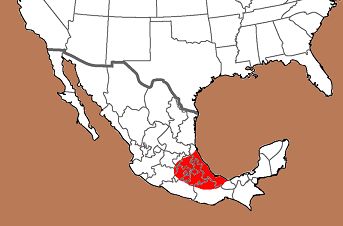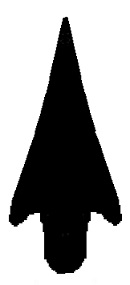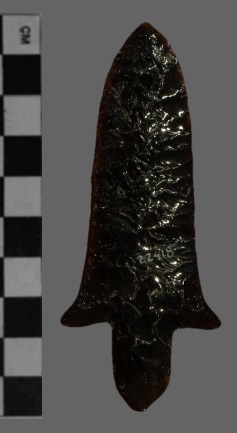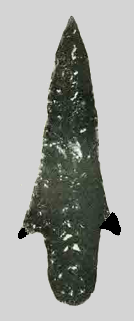Other Websites with Detailed Information:
Name Details:
Named By: Angel
Garcia Cook
Named For:
Date Identified:
1967
Type Site: Cueva de la Nopalera, Hidalgo
San Isidro
Cluster:
Date:
Cultural Period:
1,700 - 400 B.P.
Classic to Postclassic
Glacial Period:
Culture:
Phase:
Outline is Representative of Size and Shape:
Description of Physical Characteristics and Flaking Pattern:
This is a medium to large thick contracting stem point with an
elliptical cross section. The is primarily incurvate with barbed
shoulders that projects outwards. The stem is long and contracting
with a slightly convex to convex base. This point has a random flaking pattern.
Size Measurements: Length - 60 to 94 mm, Stem Length - 15 to 19 mm, Blade Width -
31 to 46 mm, Stem Width - 12 to 14 mm, Thickness - 7 to 10 mm
Distribution:
Distribution Comments:
This type is reported in This type has been reported at Cueva de la Nopalera, Hidalgo, Mexico. These points are thought to be
found throughout the Valley of Mexico.

Similar Points:
Acatita, Ahumada, Arledge, Axolotl, Coxtanlan, Encino Type II, Langtry, San Martin, Shumla, Tecolate Type II, Tilapa, Trinidad, Ventana Amagosa Related / Associated Points:
Additional Comments:
Other points in this Cluster:
Point Validity:
Cook was an influential anthropologist for the Instituto Nacoinal de
Antropologia e Historia. He conducted extensive research in the Basin
of Mexico. This type was defined in his research at Cueva de la
Nopalera.
.
Age Details:
At Cueva de la Nopalera these points appeared in
the upper level 4 with primary usage in level 3 and 2 and reduced usage in
level 1.
Pictures Provided By:
Cook, 1967
References: (See Reference Page, Entry Number):
193
San Isidro Projectile Point, San Isidro Arrowhead





